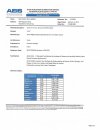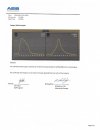Hi all, I was just made aware of this thread the other day and hadn't had time to respond.
I'm going to be blunt; 9 times out of 10 this comes down to user error--either from equipment issues or skipping steps.
It's pretty simple, if there is a specific issue, customers can contact NJSB or myself at
Ebraun@njsteelbaron.com to run through troubleshooting.
Without knowing specifics to specific incidents, it's tough to create catchall answers for general complications--as I literally just said, it might be something as skimping on cycling temps or times, if at all, or something like a thermocouple not properly communicating with a controller, or even over or under heating quench oil.
It should also be noted at this time that when I have had complaints about W2 hardening issues the past 10 months, it's come down predominately to inaccurate temperature readings; one oven manufacturer especially of late has had products that are not accurately reading temperature in the center of the oven, anywhere from 25 to 100 degrees below target.
That said, if a maker has issues with any NJSB steel, I am available for assistance for this purpose.



